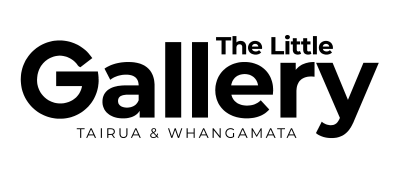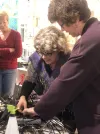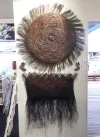Woven Time with Bernie Ross
- 9 July 2018
- Sarah Holden
The scene in The Little Gallery Whangamata on Saturday 7 July was that of a gardener who had brought her beloved plants inside. Flax was displayed in its various stages of preparation for weaving: from the plants themselves to the dried bundles of flax leaves, as well as the fibres which are extracted for kete handles. Bernie Ross was setting up to conduct a demonstration of the intricate art form of raranga (weaving), something she studied for four years and now holds a Bachelor of Maori Visual Arts Maunga Kura Toi (Raranga).
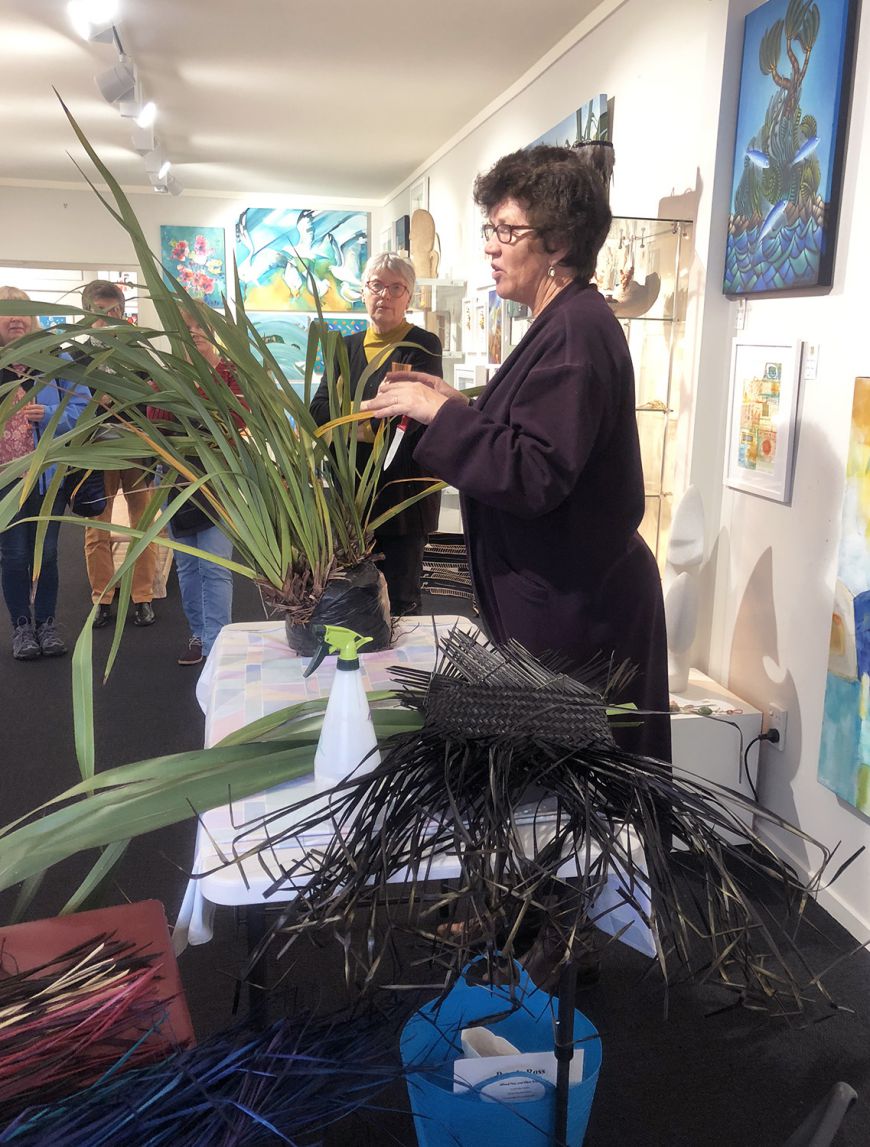
Bernie began the demonstration by explaining that there are a number of cultural factors that need to be considered in completing a piece of weaving. These included the fact that we had food and drink present, therefore we wouldn’t be working following strict Tikanga (protocol). Some other considerations included (but were not limited to): that flax can only be cut when it is dry (to make it easier for the next process), you shouldn’t weave when you are menstruating or pregnant, and that flax should not be stood or walked over.
Bernie then went on to explain the different stages of preparing the flax before it can be woven, starting with how to cut the flax. First you take a section and hold it like a fan. You don’t cut the centre leaf or rito (the baby), or the ones on either side of it (its parents), but the ones further away from the centre (the grandparents or older) are ‘fair game’. The leaves are cut on an angle pointing down from the flax to the ground and not towards the centre of the plant, as that will mean the water will pool around the baby and parents and make it susceptible to rot or disease.
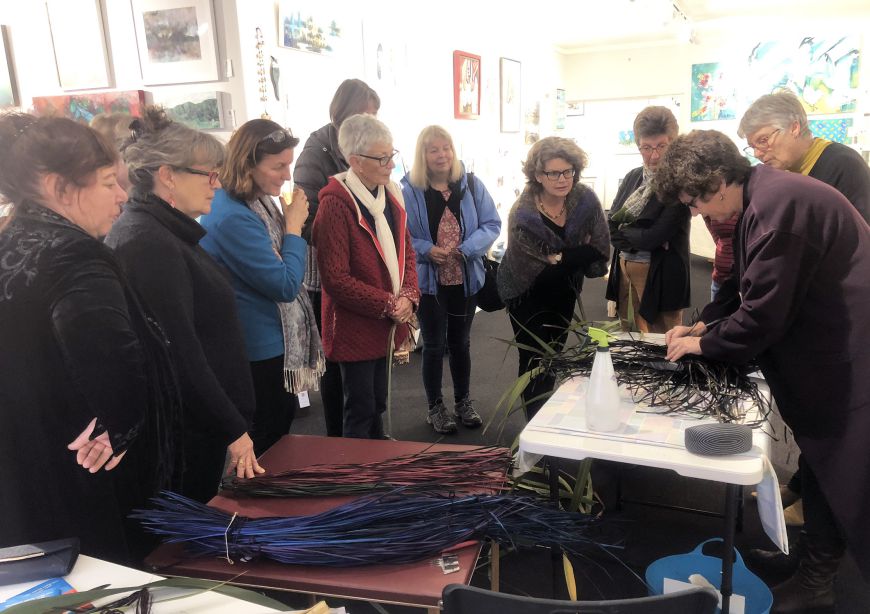
While demonstrating the correct way to prune the plant, Bernie mentioned that there are 50 different varieties of flax that can be used to weave and all have different feels and fibre ratios, making the choice of flax quite personal to each weaver. Every variety has been picked for its properties - some flax is perfect for weaving cloaks, while other varieties are better for mats (whariki). Bernie chooses one that is a fairly clean white in colour when it dries (as opposed to a sandy white), which she has special permission to gather from the Auckland Botanical Gardens.
Taking a shearing comb Bernie divides the flax into even widths. If she is going to weave kete or whariki she runs the back of a knife along the silver side of the flax to help soften it (hapene). Like curling a ribbon she moves the knife along the flax in one smooth stroke. After demonstrating this Bernie passes flax around for people to try and do the same smooth action. It was a lot harder than it looked and many created ridges in the flax. You also need to practice how much to soften the flax – too little and it will curl and stiffen and won’t weave nicely; too much and it won’t be strong enough to hold anything.
If a piece of flax was going to be used for the fibre, then Bernie would take her precious mussel shell (stored in a glasses case for safe keeping), and run it along the flax to extract the fibre. The flax ended up feeling like horse hair, fine yet coarse. Bernie tied it into bundles to be washed before further processing.
The flax for weaving is also put into bundles of 32 to allow for three sets of ten (the number needed for each bracket of weaving) and two ‘just in case’, to allow room for mistakes or ‘bad’ flax. Each bundle is then boiled for approximately two to three minutes each side. Subsequently if wanted they can be dyed with a specialist dye to ensure the vibrancy and sustainability of each colour.
Then, after what normally takes approximately a week of different stages, it’s time to weave. It takes Bernie about four to five hours to weave one kete, which is made up of 120 strands of interwoven flax. She starts by bracketing 10 strands at a time and overlaying them across each other at a 90 degree angle. One of the hardest things is getting the tension right and each finger has a role to play in ensuring that the tension is maintained correctly. The flax is worked in pairs in an ‘under and over’ motion, ensuring that the right pieces are gathered to be the next one in the row. It’s delightful to listen to how affectionately Bernie talks about the flax, often personifying it like a child who behaves or is naughty. Gentle and caring, firm but fair.
Bernie again allowed people to participate, and under her watchful eye she guided them to weave a couple of rows each.
The final touches are bird feathers (including peacock and chicken feathers) woven around the rim, and the attaching of handles – but that will be for the next demonstration we can persuade Bernie to give! We’re confident that it will be just as interesting and highlight how skilled Bernie is in this traditional art form that she has perfected, personalised and modernised.
Next up in our INSIGHT Series: Learn, Share, Do is 'From Raphael to Mondrian: Art History 'with a twist' with Lynne Robinson'. Experience a guided tour of The Little Gallery Whangamata through the lens of an art historian! For more information see here.
Enjoyed this article? Sign up to our newsletter below and be the first to hear about our latest Art Chat posts!
